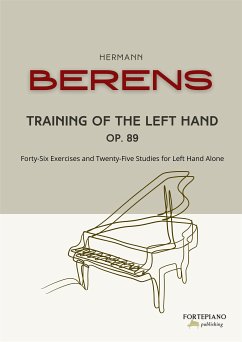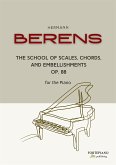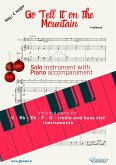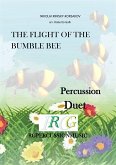"Training of the Left Hand, Op. 89" by Hermann Berens is an invaluable resource for pianists seeking to master the often underappreciated art of left-hand technique. In this insightful work, Berens addresses a fundamental aspect of piano playing that is crucial for achieving a balanced and expressive performance.
The left hand, traditionally assigned to accompaniment roles, possesses untapped potential for contributing to the melodic and harmonic richness of piano music. Berens, with his deep understanding of piano pedagogy and technique, meticulously crafts exercises and studies that elevate the role of the left hand beyond mere support to a level of expressive parity with the right hand.
This collection of exercises is carefully designed to enhance dexterity, strength, and independence in the left hand. Starting from basic exercises focusing on finger strength and agility, the book progresses to more complex studies that challenge the pianist to develop coordination and polyphonic capabilities. Each exercise is thoughtfully composed not only to develop technical proficiency but also to engage the musical intellect and artistic sensitivity of the player.
"Training of the Left Hand, Op. 89" is more than a technical manual; it is a journey towards a more holistic approach to piano playing. By focusing on the left hand, pianists will discover a new dimension of their instrument and unlock a fuller, more harmonious sound. This training enables pianists to approach their repertoire with renewed confidence and creativity, offering fresh perspectives on both classical and contemporary pieces.
Suitable for pianists of various skill levels, this work is a must-have for those aspiring to refine their technique and expand their expressive capabilities. Teachers will find it an excellent tool for guiding students in developing a more balanced and nuanced approach to piano playing.
In conclusion, Hermann Berens' "Training of the Left Hand, Op. 89" is a testament to the importance of comprehensive training in piano technique. This book not only enhances the mechanical skills required for advanced piano playing but also enriches the overall musicality of the pianist, paving the way for a more complete and satisfying musical expression.
The left hand, traditionally assigned to accompaniment roles, possesses untapped potential for contributing to the melodic and harmonic richness of piano music. Berens, with his deep understanding of piano pedagogy and technique, meticulously crafts exercises and studies that elevate the role of the left hand beyond mere support to a level of expressive parity with the right hand.
This collection of exercises is carefully designed to enhance dexterity, strength, and independence in the left hand. Starting from basic exercises focusing on finger strength and agility, the book progresses to more complex studies that challenge the pianist to develop coordination and polyphonic capabilities. Each exercise is thoughtfully composed not only to develop technical proficiency but also to engage the musical intellect and artistic sensitivity of the player.
"Training of the Left Hand, Op. 89" is more than a technical manual; it is a journey towards a more holistic approach to piano playing. By focusing on the left hand, pianists will discover a new dimension of their instrument and unlock a fuller, more harmonious sound. This training enables pianists to approach their repertoire with renewed confidence and creativity, offering fresh perspectives on both classical and contemporary pieces.
Suitable for pianists of various skill levels, this work is a must-have for those aspiring to refine their technique and expand their expressive capabilities. Teachers will find it an excellent tool for guiding students in developing a more balanced and nuanced approach to piano playing.
In conclusion, Hermann Berens' "Training of the Left Hand, Op. 89" is a testament to the importance of comprehensive training in piano technique. This book not only enhances the mechanical skills required for advanced piano playing but also enriches the overall musicality of the pianist, paving the way for a more complete and satisfying musical expression.









